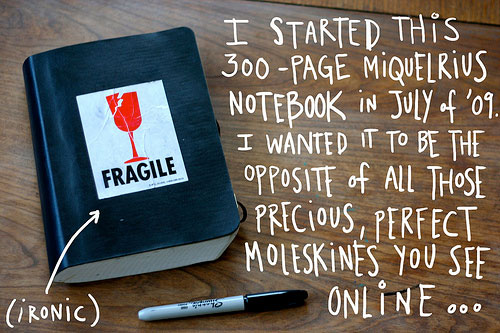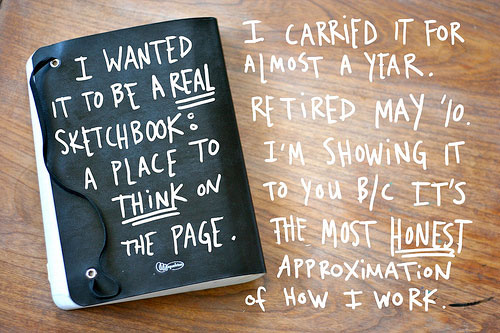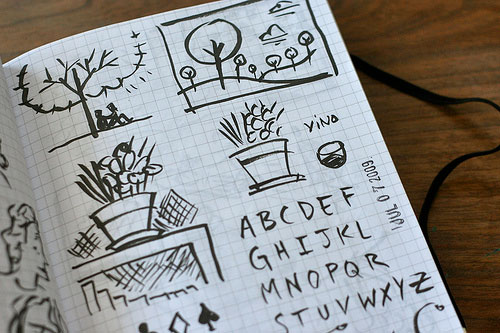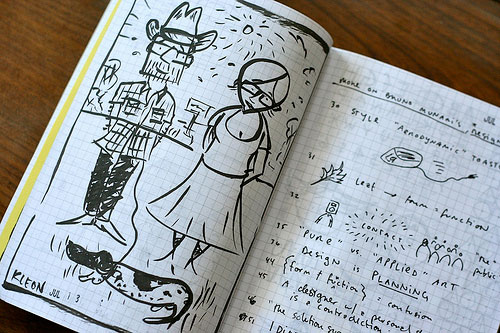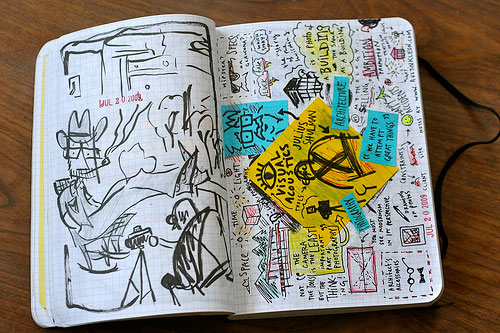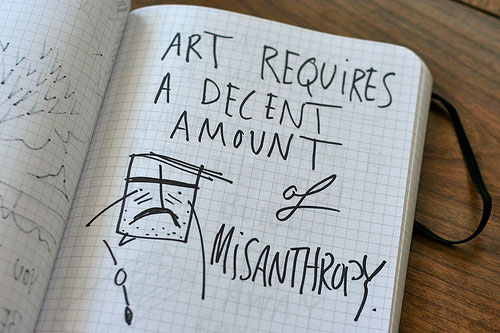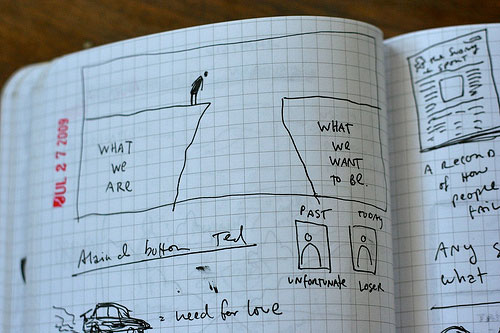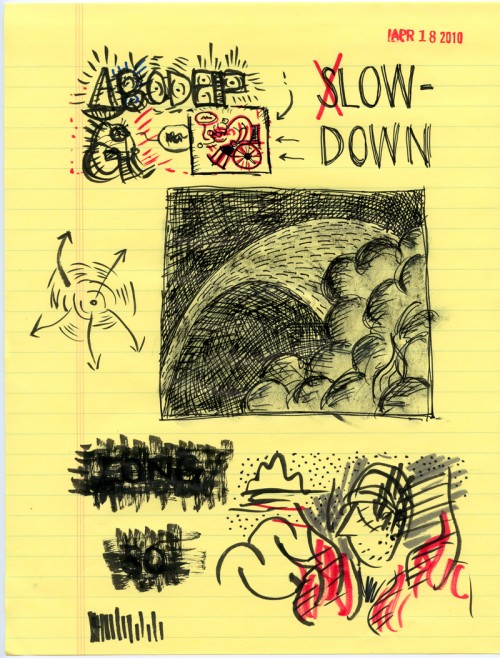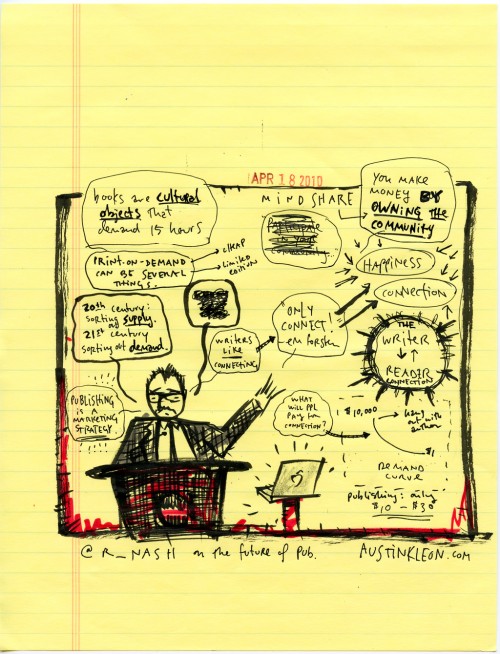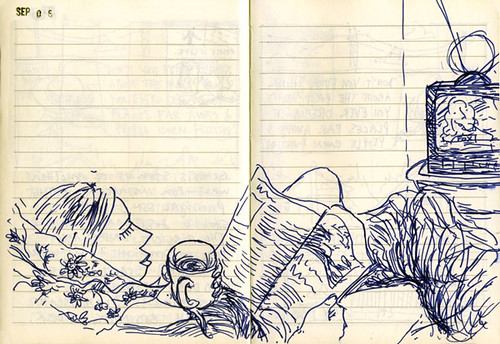ALWAYS KEEP A LEGAL PAD HANDY
I try to keep a legal pad at my work desk at all times, so that whenever I get stuck or bored, I can just move over to the legal pad to keep my hand in motion, making marks until my brain gets back on track. (I learned this technique from Lynda Barry.) I use a legal pad and not a nice sketchbook because it’s cheap and I don’t feel like I’m wasting good paper on my crummy scratches.
Every once in a while I’ll come up with a doodle I really like:

And sometimes a podcast or a video will compel me to start taking notes, like with this excellent speech by Richard Nash on the future of publishing:
TOOLS
Derek writes in,
I am very new to drawing and wondered if there are any pens that you would recommend…
I don’t recommend any particular drawing tools, because I think tools are very personal and idiosyncratic–I mean, the tools that work for one artist might not work for another. One of my artist friends won’t draw with anything more than a .5mm mechanical pencil. I, on the other hand, don’t like to draw with anything less bold than a 1mm gel pen.
Regardless, here’s a list of what I carry around in my bag:
- Miquelrius 300 page flexible notebook
I can never decide on gridded vs. blank. Blank makes for prettier drawings, but gridded is great for taking notes. - Pentel Pocket Brush Pen
- Sharpie Fine Point Marker
- Pilot G2 Gel Pen (1.0mm BOLD)
- 8-pack of Crayola crayons
The tools change, based on the occasion: when I go out with my wife to a movie or a concert, I carry a Sharpie or a gel pen and a stack of index cards.
Feel free to share your own favorite notebooks/drawing tools for Derek in the comments!
CHARLES SCHULZ ON HIS PROCESS OF MENTAL DRAWING
While I am carrying on a conversation with someone, I find that I am drawing with my eyes. I find myself observing how his shirt collar comes around from behind his neck and perhaps casts a slight shadow on one side. I observe how the wrinkles in his sleeve form and how his arm may be resting on the edge of the chair. I observe how the features on his face move back and forth in perspective as he rotates his head. It actually is a form of sketching and I believe that it is the next best thing to drawing itself. I sometimes feel it is obsessive, but at least it accomplishes something for me.
SKETCH EVERYTHING IN SIGHT
Advice from Frank King in the 1926 book HOW TO DRAW CARTOONS by Clare Briggs:
“There is one thing I tell students who want advice about cartooning; that is, to carry a paper pad and a pencil and make sketches of everything—people in every attitude, chairs, animals, boats, buildings, automobiles—literally everything. Make hundreds and thousands of them. It will help in every way when they get to doing cartoons. If persisted in they can build a fine foundation for any sort of cartooning they undertake. The beginners will find themselves becoming skillful at suggesting a face or an attitude directly and simply. They will forget all the sketches of things they have made, but they will find many of them coming back when they need them. Get some fun out of it and the beginner improves rapidly.My advice to the beginner or the advanced student—sketch everything in sight.”
